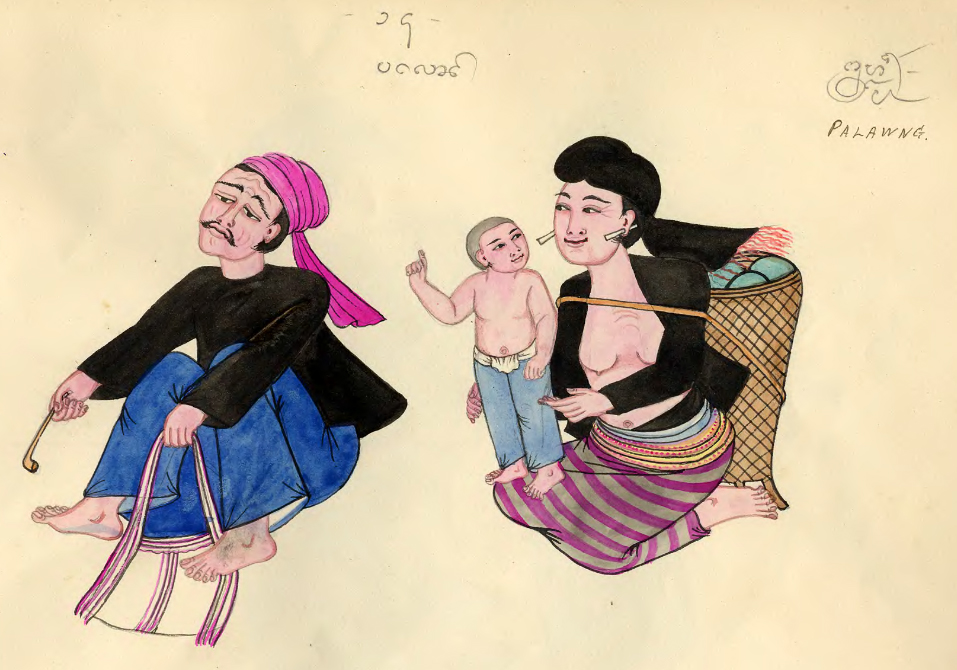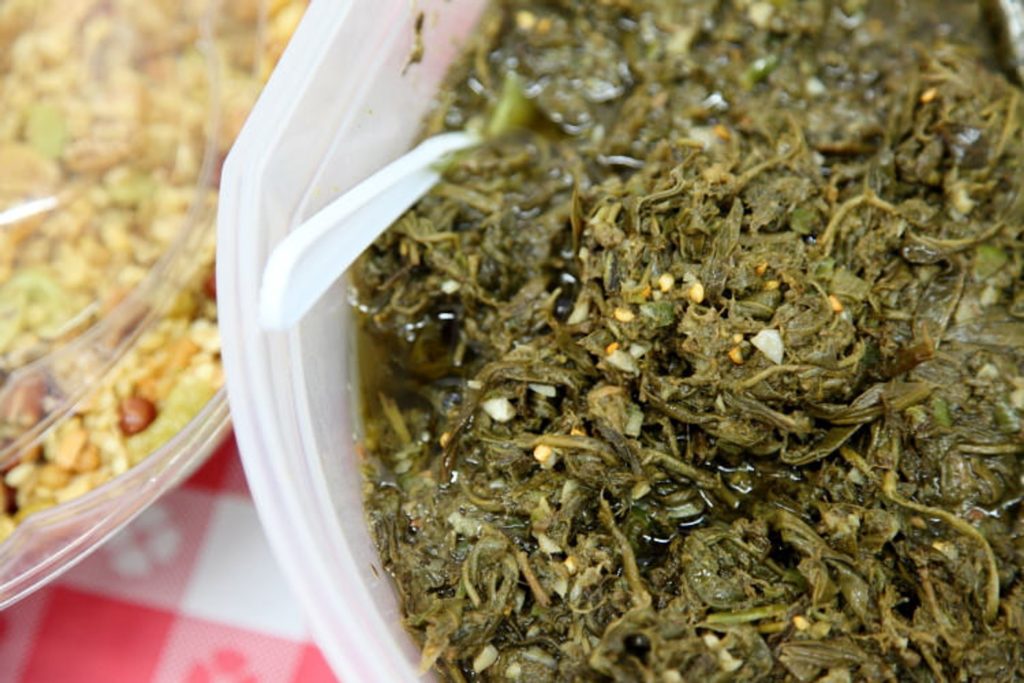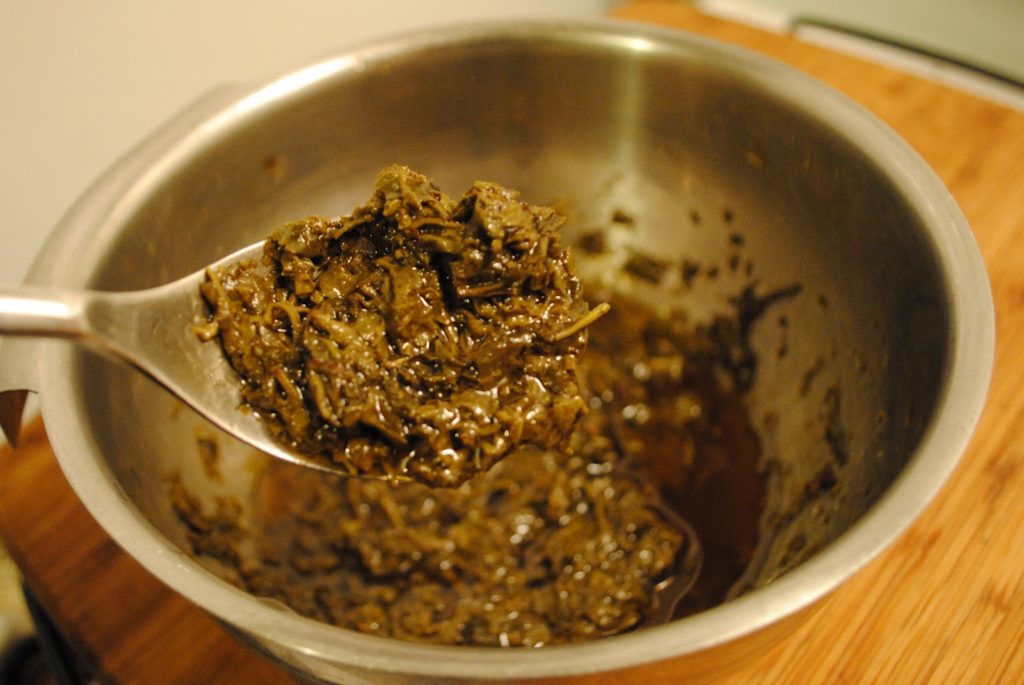According to historical records, tea was introduced to Myanmar by King Alaungsithu in the 1100s and was served in the royal court during the Pagan dynasty. Later, due to the influence of Buddhism, fermented tea leaves were used to replace alcohol in religious ceremonies. By the late 1500s, a Buddhist reform movement had successfully prevented alcohol consumption and promoted tea drinking instead. The Palaung people, an ethnic group in Myanmar, have traditionally grown and fermented tea.

The traditional process of making Lahpet Thoke involves three basic steps: steaming the tea, fermenting it, and adjusting the flavor.

After being harvested, the tea leaves and buds are steamed for about five minutes. Then, the leaves are placed in a bamboo or ceramic container and pressed down with a heavy object.
The fermentation process begins with the growth of natural lactic acid bacteria and takes about 3-4 months. The color of the leaves changes from green to yellow, and the texture becomes softer and less bitter over time.

Myanmarians have different names for the salad with different combinations
Mandalay Lahpet (hay Ahlu Laphet): Mandalay Lahpet is the traditional salad that is served in a dish with the fermented leaves in the middle, the other ingredients are spread round the tray. This dish is served in religious festivals and other grand ceremonies.

Lahpet Thohk (hay Yangon Lahpet): Fermented tea leaves are then mixed with other ingredients such as tomatoes, garlic, green chili, cabbage, sesame oil, roasted peanuts, and lime juice to make the salad.

Zayan Lahpet: Zayan Lahpet is made using fermented lahpet tea leaves mixed with starfruits and other pickled leaves.
Thai’s Lahpet Thoke is called Yam Miang.
The dish is also considered a symbol of peace and is used as a gift to resolve disputes between kingdoms.
If you ever get a chance to visit Myanmar, don’t forget to try this unique and delicious dish!














